FEEDING
Bearded Dragon Diet & Nutrition
Bearded dragons are omnivores, which means they aren't picky about what they eat! They enjoy eating both animals and plants. On the carnivorous side, bearded dragons will eat insects (crickets, super worms, and roaches) and even pinkie mice and smaller lizards. For plant matter, beardies will happily eat most cut up vegetables, and some will eat fruits. When possible, opt for the foods with the most nutritional value. For example, romaine lettuce is far more nutritious than iceberg lettuce.
Bearded Dragon Diet
Again, your bearded dragon is an omnivorous creature, so its diet needs to have both plant and animal matter. For plant matter, the dietary options are limited. But, there are a lot of vegetables and fruits that your beardie can safely eat and enjoy. It’s important to make sure that you give them some variety; beardies can get bored of eating the same thing over and over again, just like humans! Also, it’s good to pay attention to which foods they like the most, so you know how to treat them to something special! It’s important to understand that the dietary needs of bearded dragons change slightly based on their age.
Bearded Dragon Feeding
Not only do dietary needs of beardies change based on size/age, but so do feeding methods. In their infantile stages, bearded dragons are much more fragile because they haven’t fully developed. This needs to be taken into account when feeding hatchlings. Live crickets and roaches aren’t going to stay in one place, which gives your beardie some exercise and hunting experience. Other food should be placed in their food dish. Not only does this help train your bearded dragon to know where to look for its food, but it helps increase the longevity of whatever material you’ve chosen as your tank’s substrate.
Feeding A Baby Bearded Dragon
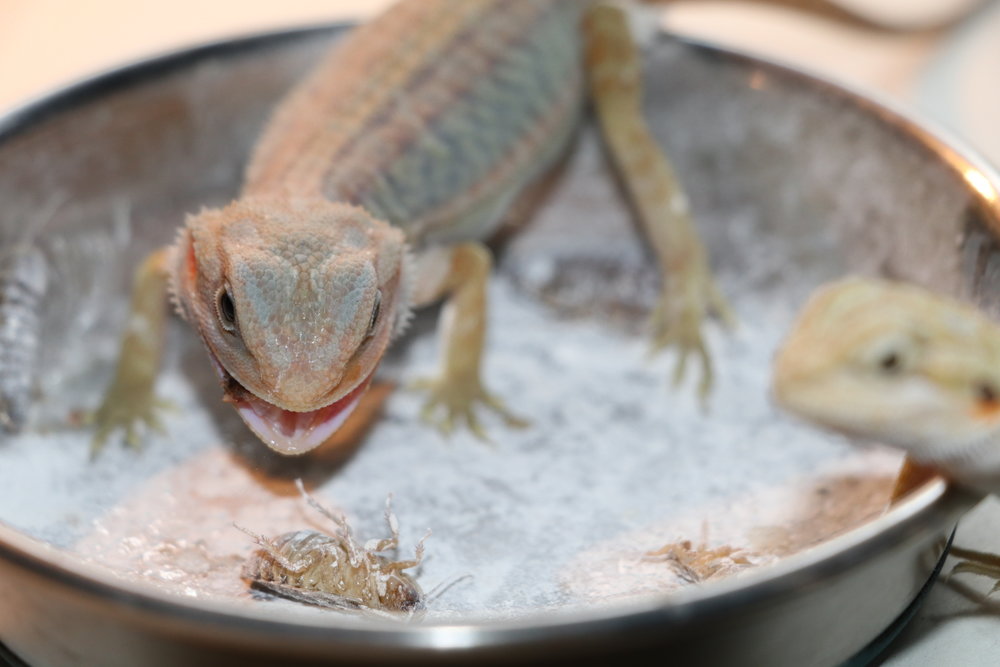
Newly hatched beardies require a lot more feeding care. Hatchlings need a lot of protein to facilitate their growth and development. So, feeding them protein-rich prey is essential. The best option is small crickets, as these are size-appropriate and easy for a little beardie to manage. Mealworms, on the other hand, have harder shells, which can cause difficulty chewing for young dragons.
For plant material, make sure there’s always leafy greens available to nibble on. This is especially important if you’re keeping multiple hatchlings in the same enclosure. These always-available greens will prevent the hatchlings from nipping at each other in between cricket feedings.
Bearded dragons need plenty of water in their early stages. Misting the cage walls, decorations and even the baby beardies themselves is crucial towards ensuring that these younglings get the water they need. You can use a dropper if the hatchlings aren't correctly lapping at the water droplets.
Feeding An Adult Bearded Dragon
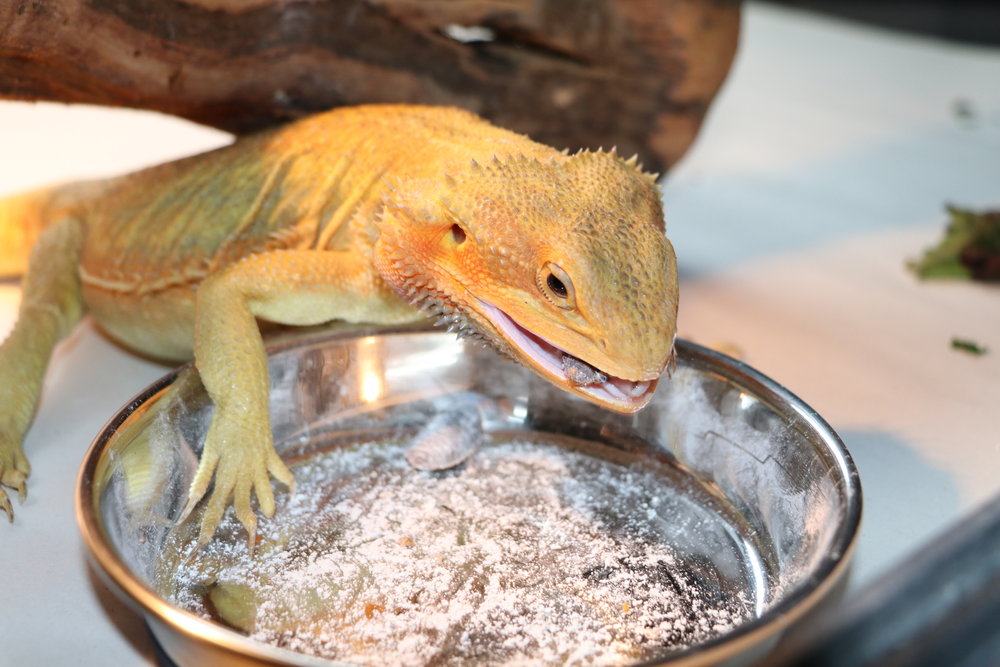
Whereas baby beardies require roughly 40-60% protein in their diets, adult dragons only need about 25% protein and 75% plant materials. Adult bearded dragons have a much more diverse number of food options, which adds a lot of flexibility. They also don’t require food as often as young hatchlings. An adult beardie may only need to be fed once a day. That said, it is essential to make that feeding time routine, so your reptile knows when to expect food.
Because bearded dragons are so friendly and docile by nature, you can hand-feed your adult dragon its vegetables and fruits, if you want. Otherwise, they are happy just eating out of their food dish. Insects, especially crickets, and other live prey should be dropped into the enclosure for your beardie to hunt on his own. This helps ensure he or she gets some exercise!
Adult beardies can be offered a number of new things that they couldn’t eat as a baby or adolescent, such as pinkie mice or small lizards. Some owners even offer their lizard canned dog food or softened rabbit pellets! Beardies really aren't picky eaters. These types of items should be provided very sparingly (once every three weeks to a month). Otherwise, you can easily overfeed your pet.
Bugs and Insects for protein
Common bugs used as staple feeders include: Crickets, Roaches, Super Worms, Black Soldier Fly Larvae (Phoenix worms), and Hornworms. There are a few other acceptable bug and insect species but these are the most nutritious for your dragon and can be found at most pet stores and all over the internet.
Juvenile and sub adult beardies should be fed a variety of bugs from the list above 1-3 times per day. By feeding them as much as they can eat in one sitting, you can get a feel for what they are capable of. You can tell you are overfeeding bugs if they look really bloated and poop more often than usual. You can tell you are underfeeding bugs if your beardie appears to look skinny and has smaller than usual bowel movements.
Its also important to "gut load" your insects with nutrients by making sure they are eating the appropriate food for that specific species. There are many companies in pet stores and online that sell special made food for gut loading your insects.
Buying And Keeping Crickets And Superworms
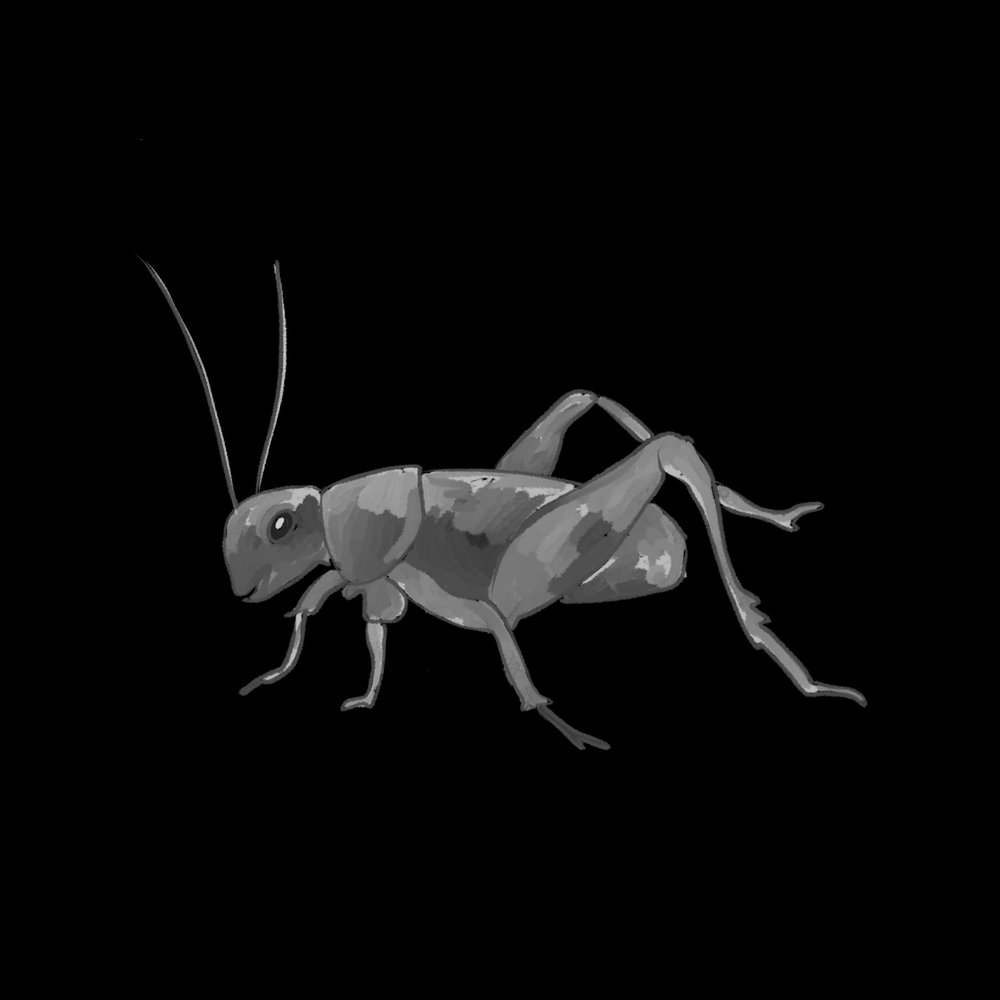
Bearded dragon owners need to keep a supply of crickets and superworms on hand for feeding. Thus, it is essential to have another enclosure to house your beardie’s food supply and keep them alive long enough for feeding time. The good news is that these insects require very little to survive. Crickets are good with small scraps of newspaper or an empty egg carton for housing, a damp paper towel for water and food, like fish food flakes, thin-sliced carrots, oats and more. There’s also specially made cricket food. It’s more expensive but ensures that your crickets are healthy and nutrient-rich when you feed them to your beardie.

Superworms and mealworms are even easier to keep. All you need is a container with a ventilated top, about four inches of dirt at the bottom and an occasional fruit slice or vegetable scrap. If you want to breed superworms or crickets (which can help save you money at the pet store!), you will want to do some additional research.
Greens & Veggies
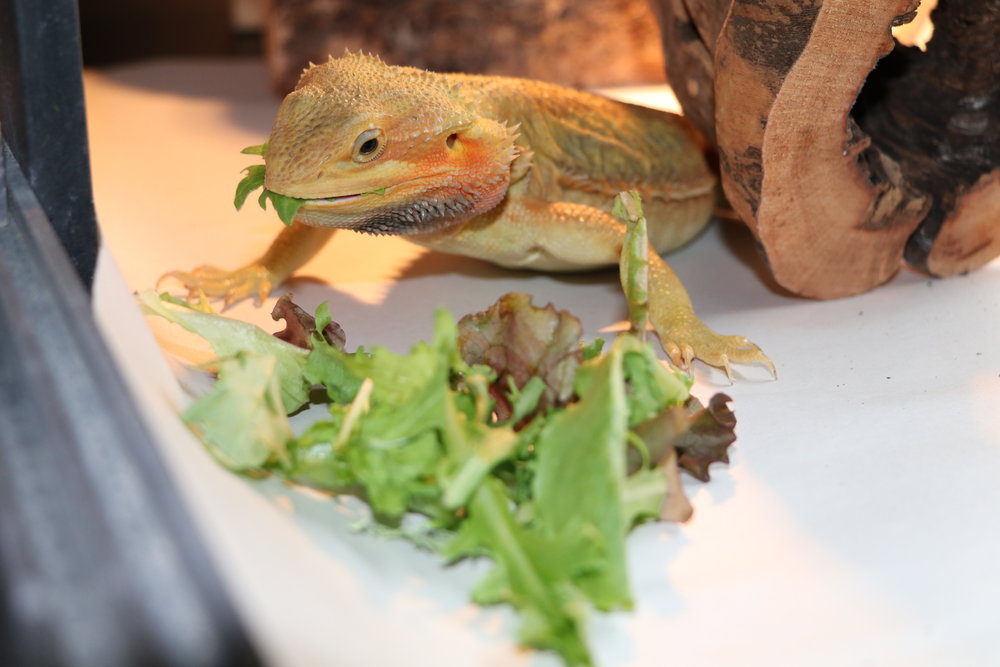
Common greens and veggies to feed as a staple include: Collard Greens, Mixed Spring Greens, Kale, Spinach, Mustard Greens, Dandelion Greens, Turnip Greens, and Butternut Squash. There are much longer lists of acceptable fruits and veggies online but these are the ones my beardies tend to love the most.
Beardies can be fed any of these veggies shredded or torn into small pieces based on the dragon's size. Its ideal to get some greens in their diet everyday but some dragons can be picky and only want bugs. If your beardie doesn't seem to eat any veggies offered you can offer less bugs overtime while keeping a variety of greens in their tank and they should eventually begin eating the veggies.
Bearded Dragon Supplements
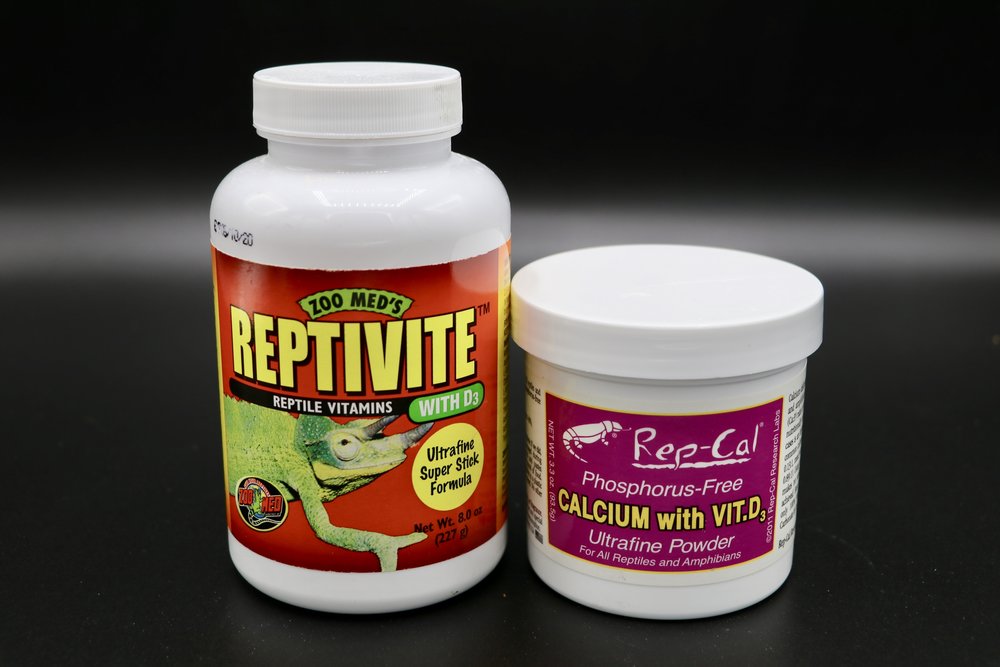
Vitamin and mineral supplements are a great way to ensure that your beardie gets all of the nutrients they need. These supplements are sold in a powder form, which allows you to dust any food you feed your lizard, even crickets and worms! The best tactic is to put some of the supplement powder into a ziplock bag or closable container. Then, add whatever critter or plant matter you’re feeding your bearded dragon and shake the container or bag. This will coat the food in the supplement and enrich its nutritional value. If it is a live creature, like a cricket, don’t shake too much. Otherwise, you might kill the cricket and rob your beardie of the fun of hunting!
CALCIUM WITH VITAMIN D3
Since our captive dragons generally don't get enough sun its necessary to supplement Calcium in their diet with powders. Many different companies make quality Calcium powder for reptiles. Its best to get one with Vitamin D3 as its an added bonus for beardies. Calcium can be dusted on your bugs by shaking them in a bag or container with the powder before feeding to your dragon.

